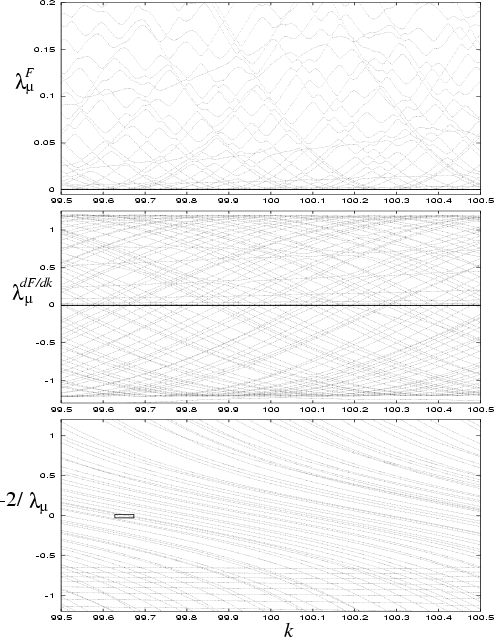I have not yet been able to find a direct wave-mechanical explanation
(which would bypass the above semiclassical estimate)
for the quasi-orthogonality of dilation.
However a clue is given by Berry and Wilkinson's proof [28] that
degenerate
(![]() ) off-diagonal elements are exactly zero.
An explanation for
) off-diagonal elements are exactly zero.
An explanation for
![]() was first attempted by VS [195,194].
They
tried to establish quasi-orthogonality
using the identity
was first attempted by VS [195,194].
They
tried to establish quasi-orthogonality
using the identity
![]() , with
, with
![]() .
This identity can be proved in a simple fashion (Eq.(H.25)).
However, they then made the assumption
.
This identity can be proved in a simple fashion (Eq.(H.25)).
However, they then made the assumption
![]() (for
(for ![]() )
by claiming that eigenstates
are uncorrelated across the volume of
)
by claiming that eigenstates
are uncorrelated across the volume of ![]() [194].
(In
[194].
(In ![]() this would give
this would give
![]() variables whose variances add linearly).
This would give a power law
variables whose variances add linearly).
This would give a power law ![]() for the off-diagonal growth of
for the off-diagonal growth of
![]() .
.
This is in error for two reasons.
Firstly, we know that the number of degrees of freedom in a constant-wavenumber
function is actually
![]() scaling like the boundary
(see Section 5.3.1), which would imply the naive random-wave estimate
scaling like the boundary
(see Section 5.3.1), which would imply the naive random-wave estimate
![]() .
Secondly, a random wave estimate of an overlap over a large fraction of the
region is generally very bad (Section 3.3.2).
In fact, comparison to our band profile results (analytical and numerical)
shows that
.
Secondly, a random wave estimate of an overlap over a large fraction of the
region is generally very bad (Section 3.3.2).
In fact, comparison to our band profile results (analytical and numerical)
shows that
![]() , a result which cannot
be guessed by random wave assumptions.
This result has also since been verified by Vergini 6.1.
, a result which cannot
be guessed by random wave assumptions.
This result has also since been verified by Vergini 6.1.
The conclusion is that the original authors' quasi-orthogonality estimate
(which they have used in [195,194,175,196,203])
was in fact pessimistic:
the true power law ![]() actually gives much smaller
elements close to the diagonal.
actually gives much smaller
elements close to the diagonal.
 |